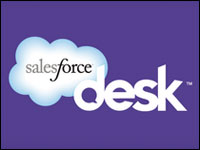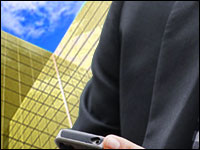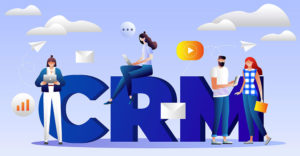
Outrage rightly developed following reports that Megan Meier, a Missouri teenager, killed herself after a fictitious friend — invented by the mother of a neighborhood girl — left nasty messages on her MySpace profile. Prosecution has been considered but, so far, rejected.
However, online vigilantes hounded the woman at the heart of the deception, Lori Drew. Meanwhile, local politicians drew up legislation to prevent such Internet bullying in the future, although as blogger God, Politics and Rock ‘N’ Roll reported, the bill, which initially targeted the Internet, is now simply trying tostrengthen existing harassment laws.
As social media become more embedded in our lives, tragedies like the Megan Meier case may be the inevitable fallout.
Corporate Web 2.0 usage does not hit such personal nerves. Still, as in the personal use of new technologies, it is not bound by rules and convention: a theme touched upon by several bloggers in the CRM world this week.
Moorings Anyone?
“No technology — no application — is 100 percent good or beneficial,” Dennis Pombriant, principal of Beagle Research, told CRM Buyer. “There will always be issues you need to consider in the proper use or application of technology.”
Companies need to learn the new rules if they haven’t already, he warned. “Historically, if they were confronted with criticism, they would ignore it — especially if it came from a small source. After all, they owned the megaphone.”
Conversely, consumers have to learn what is responsible and irresponsible reporting, he cautions in his post,Danger and Opportunity in Social Media.
“At first I only saw the incredible benefits that social media could provide and it has taken a while for the technology to mature and begin to take its place in the tool set. As it has done so, the down side has come into sharp focus.
“My simple point is that social media has loosened our moorings and we really get all stripes out there from responsible users of social media to its polar opposite.
“Loosened standards [make] social media at once both a danger and an opportunity for business. In business we need facts and firm data upon which we can make decisions. Not understanding the limitations of the data churned up by social media can seriously hurt a company and your career,” Pombriant concludes.
Jonathan Abolins, author of theEntering the Networked World blog, focuses on the privacy issue in a recent post.
First, some background: The Washington, D.C., community has been alternatively amused, annoyed or horrified — depending on one’s point of view — by the recent actions of a local high school student who called his principal at home to ask why the school hadn’t been closed that day due to snow.
The principal’s wife got the message and called the student back. Getting his answering machine, she left a hectoring (some would say) message about his rudeness. The student thenposted her message on YouTube, where it promptly took off. The student, reached by local reporters, attributed the conflict to a generation gap — meaning people his age expect to be able to reach someone for an answer any time of day.
Abolins first addresses the issue of the expectations that mobile phone usage has created.
“I have a prediction, within a decade or less, some court or another will [consider] not having a mobile communications device and being always reachable to be a lack of due diligence,” he wrote. “The rationale will be that, by choosing not to avail [oneself] of a mobile and keeping it on, one has chosen to be incommunicado for important calls. E.g.; a parent not being able to receive a call from the school seeking consent for medical treatment for the parent’s injured child.”
His post then takes a more philosophical turn, which has implications for the corporate world.
“Our lives will span many changes in technologies and cultural approaches to them. Today’s digital natives are at the risk of ‘not getting it’ a couple of decades from now. The blogs, IM, Facebook, MySpace, and that that will become old eventually and new things will come along. Personally, I find this diversity fascinating, but the tough part is to work out the frictions in communications.”
Brand Experience
Indeed, social media have become so powerful, they have the ability to seriously damage a brand. Unfortunately, many companies still have difficulty maintaining their brand — even without the aid of irate bloggers and YouTube posters.
“A great brand experience adds value and promotes word of mouth,” Nigel Hollis, an EVP and chief global analyst at Millward Brown,writes in a post.
“For a service company like an airline, financial institution, or rental car agency, good customer service is a critical part of a great brand experience,” he says. “But all too often, companies like these fail to align their business logistics to deliver good service and their customers are left feeling taken for granted.”
The problem, he goes on to say, is that often business logistics undermine the consumer experience rather than enhance it.
“Nothing weakens customer loyalty faster than a system that, while clearly designed to be cost-efficient for the company, doesn’t address the service needs of the customer. ‘Our customers don’t want to pay for service, so we might as well make it cheap’ seems to be their philosophy.
“How wrong they are. Successful brands align their logistics to deliver a great experience efficiently and, as a result, deliver added value that customers are happy to pay for,” Hollis argues.
Naming Names
Nothing inspires posters like a venue to discuss good and bad customer service experiences, and Hollis’ post is no exception.
Keith Sutherland writes:
“A few companies that to this day deliver excellent customer service include: Nordstrom (for those in the UK it’s a bit like Selfridges only better). These guys treat every customer with a personal and endearing touch. They all have business cards and they follow up with you if items are out of stock and go the extra mile to get things right during your time in the store.
“My wife recently bought a pair of boots that are quite lovely, but slightly too big around the calfs. The Nordstrom sales guy quickly jumped on his PC and instantly gave Kathryn a few local recommendations to get the boots altered and asked that we fax in the bill and they would cover it. Alterations were $80 on top of a $300 pair of boots. True to their word, Nordstrom’s paid for the alterations. That type of customer service keeps Kathryn going back (again and again). Other great examples: Callaway Golf (best customer service in the industry by far) Apple Retail store. I bought an Ipod Classic during Christmas and they had mobile cashiers all over the store to get my item quickly and effortlessly. Loved it.
“Don’t get me started about Delta airlines over the holidays though.”
Valbus writes that one of the best examples of great customer service for him is Wegmans, the food retail chain in the U.S. “Their secret: a very strong value-driven culture where employees truly feel valued and even more important strong employee empowerment to do whatever is right to make sure the customers are happy … and it pays off. Great loyalty and voted best supermarket in the U.S. …”
And then there’s Philip Herr’s contribution: “I have been staring at the screen for some time trying to come up with an example of good customer service. I am sure I have experienced it recently. Haven’t I?”






















































